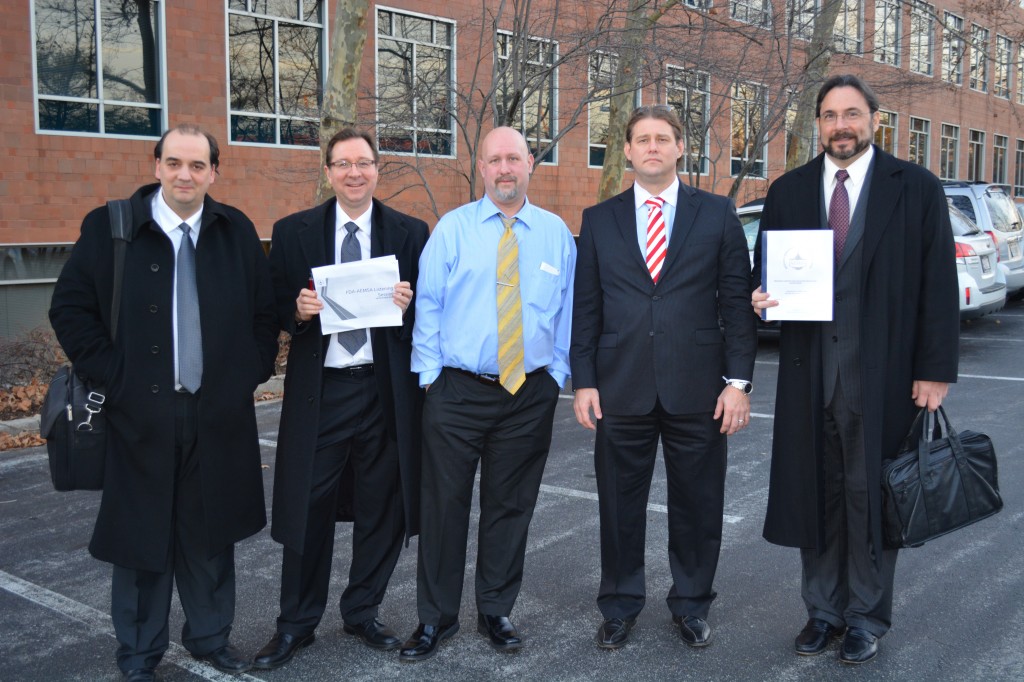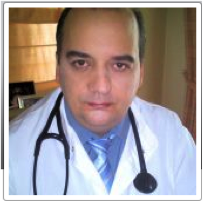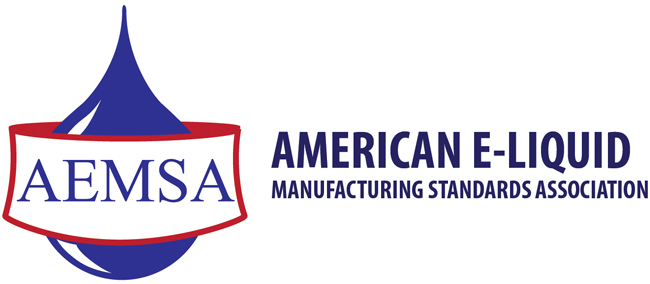 Once again, and continuing consistently with our stated Mission and Charter, AEMSA actively supports Medical/Scientific Research in advocacy for our members and refillable e-liquids. On Thursday December 19, 2013 AEMSA returned to the FDA for “Listening Session” #3. This time we brought Dr. Farsalinos along to make the primary presentation.
Once again, and continuing consistently with our stated Mission and Charter, AEMSA actively supports Medical/Scientific Research in advocacy for our members and refillable e-liquids. On Thursday December 19, 2013 AEMSA returned to the FDA for “Listening Session” #3. This time we brought Dr. Farsalinos along to make the primary presentation.
During the first “Listening Session” (March 21, 2013), we introduced the FDA to AEMSA’s Structure, Membership, Mission, Standards, Science behind the Standards (SME presentations), how the Standards are applied by our General Members in their facilities and our Inspections (both scheduled and unscheduled). At our second “Listening Session” (July 12, 2013), we sought to educate and inform the FDA about refillable gear, how it is used and the devices on which it gets paired. The AEMSA team brought a representative collection of sample hardware products (examples of the most common spectrum). We presented on the evolution, application(s) and contributions these products make towards efficacy and the consumer driven innovations being engineered into newer devices like over/under-charge protections, short circuit protections, “smart-charging” and more.
Immediately after returning from the second FDA Session, we began to evaluate the next piece of urgently needed and most informative information we could bring to the FDA and the world. It quickly became clear that no one (worldwide) had clearly identified the amounts of nicotine actually being delivered into the bloodstream. Liquids had been analyzed, vapor (first and second hand) had also been analyzed but no clearly identifying and informative analysis had been conducted to provide what can be referred to as Plasma Nicotine Absorption Levels (PNLs).
 Cardiologist Dr. Konstantinos Farsalinos is globally recognized as one of the leading Medical Researchers in the world on the subject of electronic cigarettes. AEMSA is honored by his involvement as a Subject Matter Expert (SME) – on an unpaid volunteer basis. His profound contributions to our foci, Standards refinements and advocacy continue (as herein evidenced) to be extremely valuable towards enhancing consumer protections, educating regulators and greatly facilitating electronic cigarette advocacy. As we evaluated the possibilities of pursuing a Clinical Medical Study on PNLs, of course we immediately went to Dr. Farsalinos asking how such a Study could be accomplished.
Cardiologist Dr. Konstantinos Farsalinos is globally recognized as one of the leading Medical Researchers in the world on the subject of electronic cigarettes. AEMSA is honored by his involvement as a Subject Matter Expert (SME) – on an unpaid volunteer basis. His profound contributions to our foci, Standards refinements and advocacy continue (as herein evidenced) to be extremely valuable towards enhancing consumer protections, educating regulators and greatly facilitating electronic cigarette advocacy. As we evaluated the possibilities of pursuing a Clinical Medical Study on PNLs, of course we immediately went to Dr. Farsalinos asking how such a Study could be accomplished.
Consistent with his usual professional competence, thoroughness and effectiveness, Dr. Farsalinos found an effective way to not only conduct and complete the Study – he also developed protocols that would identify a range of PNLs. His Study protocols revealed nicotine delivered from both ciga-likes and representative PNLs from a “new-generation” (advanced/”enthusiast”) device at an average/more-common higher energy delivered (watts) level. Dr. Farsalinos was able to compare these results to formerly peer-reviewed/published Study material delineating PNLs from combusted tobacco cigarette use.
Dr. Farsalinos did not stop there. He also was able to make PNLs comparisons between experienced electronic cigarette consumers vs. novice e-cig users (current tobacco cigarette smokers) and the results are illuminating.
Dr. Farsalinos’ Study will be submitted to be Peer-Reviewed and Published. Under these circumstances, we cannot reveal the specific details of the results at this time. Such disclosure/posting would interfere with the Study getting peer-reviewed and published. However, we can provide some insight into the results. Once the Study has been published, we will be able to post links to the full Study details.
The study was conducted at the Onassis Cardiac Surgery Center in Athens-Greece. The results showed that PNLs from ciga-likes were dramatically lower as compared to tobacco cigarettes. The “new-generation” (advanced) devices delivered more nicotine (as evidenced by PNL) than the ciga-likes and they became increasingly more efficient at nicotine delivery over the time (more use – cumulatively) of the Study time-window. The “new-generation” device showed evidence of being more efficient at nicotine delivery than the ciga-likes and came closer to tobacco cigarette PNLs over time yet indicated tobacco cigarettes still deliver substantively more nicotine puff-for-puff.
Taking into consideration puff durations, etc., novice e-cig users’ (tobacco smokers) PNLs indicated less nicotine absorption as compared to experienced electronic cigarette product consumers.
The same refillable 18 mg/ml (most common nicotine level) e-liquids were used in all devices and across all participants. These liquids were thoroughly analyzed by an accredited laboratory and the full details of these analyses were presented to the FDA. The full details of these comprehensive analyses will also be presented in the full Study when Peer-reviewed and Published. All we can say now, on this facet of the Study, is that e-liquids have come a long way and the results are most comforting and positive.
AEMSA Sponsored 100% of this Study. We are very proud to announce 100% of our membership participated in the voluntary financial contributions process to raise the funding needed to cover all costs of Dr. Farsalinos’ Study and bring him here to the USA to personally present his Study to the FDA. AEMSA Members continue to lead the way in advocating for refillable e-liquids and supporting Clinical Medical/Scientific Research.
AEMSA brought some additional information to the FDA clarifying facts over misinformation about refillables relative to flavorings, use patterns, other product concerns and more.
 The FDA representatives were over 20 in attendance. And again, (as consistent with our previous experiences with the FDA) we found them interested and engaged in all information presented. They asked substantive questions and invited us to return when we have more to share with them.
The FDA representatives were over 20 in attendance. And again, (as consistent with our previous experiences with the FDA) we found them interested and engaged in all information presented. They asked substantive questions and invited us to return when we have more to share with them.
You can find Dr. Farsalinos’ post about his experiences with this Study and the FDA on his website here: ecigarette-research.com
——————–
AEMSA is only one year young and we continue to seek new ways to expand our foci, advocacy and effectiveness of our messages. We will continue to seek new ways to add more facets, involvements and participations in the AEMSA Voice representing our members and refillable e-liquids.
AEMSA wishes one and all a very happy, healthy and joyous Holiday Season and a prosperous New Year.
